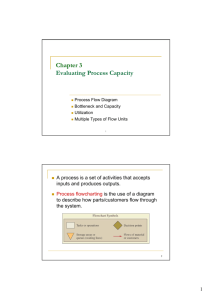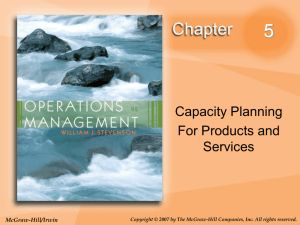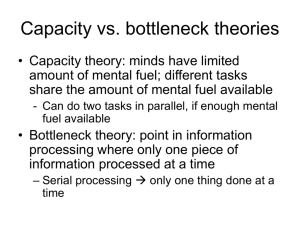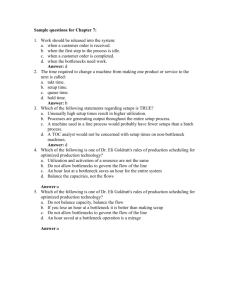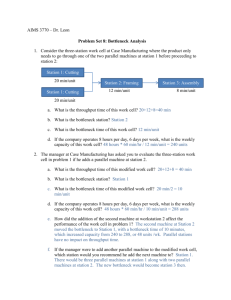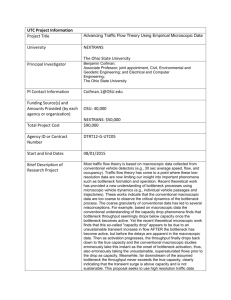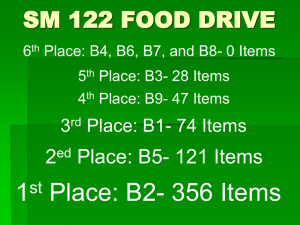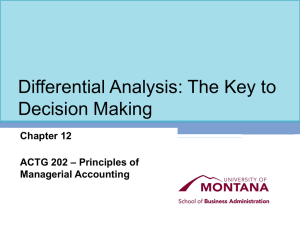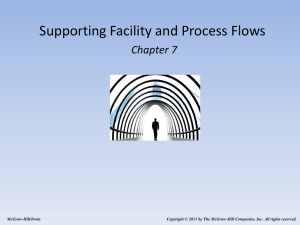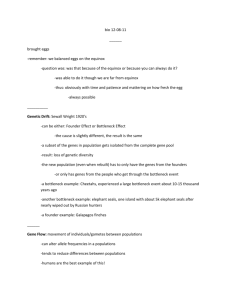CT 3
advertisement
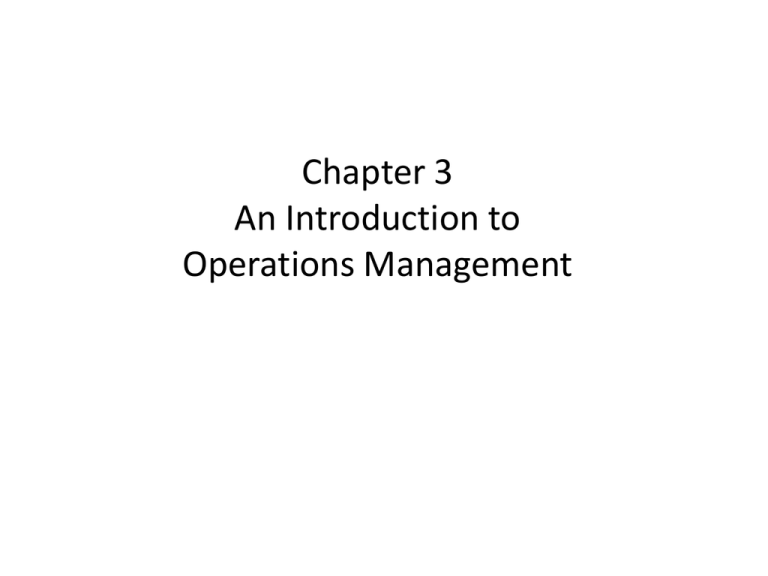
Chapter 3
An Introduction to
Operations Management
How to Create a Process Flow Diagram
2nd Stage
FB Reactor
CFB
Preheater
1st Stage
CFB Reactor
~ 110 m
Inclined
Bucket Elevator
Briquetting
Plant
Process
Gas
Heat
Exchanger
Iron
Ore
Fines
Electrical
Substation&
Control
Room
Process Gas
Compressor
Fired Gas Heaters
~ 160 m
HBI Product
How to Create a Process Flow Diagram
Pre-Heater
Lock
Hoppers
1st
Reactor
Discharge
2nd
Reactor
Flash
heater
Pile of Iron
ore fines
Briquetting
Finished
goods
Key-points in Process Analysis
• Simplify a complex process using a process flow diagram
• Bottleneck analysis: analyze the process by looking at the bottleneck
• Bottleneck may depend on the product mix
• Time to complete X units
•Starting with a loaded system:
X
T im e to fulfill X units
F low R ate
•Starting with an empty system
T im e to fulfill X units T im e through em pty proce ss
X 1
F low R ate
- For continuous flow processes: (X-1) = X
- If capacity constrained, flow rate is dictated by the bottleneck
Input
Flow Rate R
Demand vs. Capacity Constraints
Capacity constrained
Demand constrained
Bottleneck
(Capacity)
Input
Bottleneck
(Capacity)
Flow
Rate
Flow Rate
Flow Rate
Flow
Rate
Demand
Excess
Capacity
Demand
Flow Rate=Min{Demand, Capacity}
Excess
Capacity
Process Utilization and Capacity Utilization
• Utilization: How much is
produced relative to what could
be produced
Process U tilization =
Flow Rate
Process C apacity
• Can be computed for an entire
process and for each resource in
a process
Resource U tilization =
Flow Rate
Resource C apacity
Im plied U tilization =
Maximum values?
C apacity Requested by D em and
Available C apacity
How To Conduct a Process Analysis
Prepare a
process flow
diagram
Extensions
Required
for working
With
multiple
flow units
Identify
the flow
unit
Use different
colors to mark
flow units
Compute the
capacity for
each of the
resources
Use demand
to compute
the implied
utilization
levels
Identify the
bottleneck
Compute
Note that capacity
workload across
levels may differ
all product
depending on
types
product type
Compute
performance
measures
Step with
highest implied
utilization
A finance company receives 1,000 loan applications per 30
day working month and makes accept/reject decisions based
upon a thorough review. On average, 20% of all applications
receive approval. An internal audit revealed that the
company has 500 applications in process at various stages.
In response to customer complaints, the company forms an
initial review team to pre-process all applications. Each
application will be categorized either A (excellent), B (needs
more detailed review), or C (reject). On average 25% of the
applications are type A, 25% are type B, and 50% are type C.
70% of type A and 10% of type B applications are approved on
review. Internal audit checks show that 200 applications are
with the initial review team, 25 with the type A team, and 150
with the type B team.
Has customer service improved? Why?
1.
2.
3.
A hospital ER is currently organized so that all patients
register through an initial check-in process. At his turn,
each patient is seen by a doctor and then exits the process,
either with a prescription or with admission to the hospital.
Currently, 50 people per hour arrive at the ER, 10% of
whom are admitted to the hospital. On average, 30 people
are waiting to be registered and 40 are registered and
waiting to see a doctor. The registration process takes, on
average, 2 minutes per patient. Among patients who
receive prescriptions, average time spent with a doctor is 5
minutes. Among those admitted to the hospital, average
time is 30 minutes. On average,
how long does a patient stay in the ER?
how many patients are being examined by doctors?
how many patients are in the ER?
